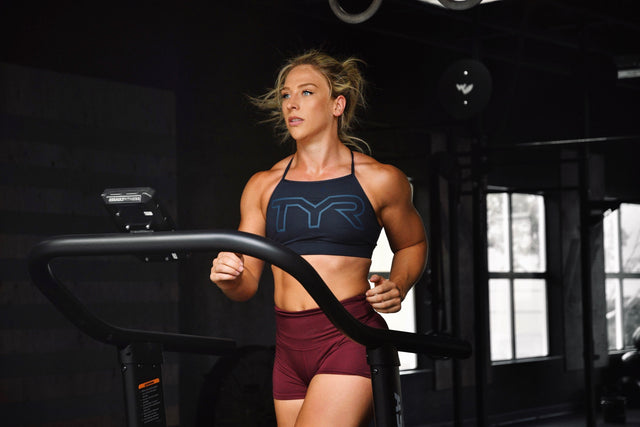Today we’re going to learn some fitness vocab and talk about adduction and abduction. Knowing the difference between adduction and abduction exercises can help you train better, improve your form, and make strides in your power and strength.
The terms adduction and abduction refer to the movement of body parts either away or towards the midline of your body.
Adductor Vs. Abductor Muscles
Believe it or not, the adductor magnus is the second largest muscle in the body. It’s the primary muscle that initiates hip extension from a squat position. The adductor is on the medial side of the thigh, meaning closer to the middle of your body, and is a powerful hip extender. The adductors attach from the pelvis to the femur and help stabilize the hip joint.
The adductors are comprised of a group of five muscles in the lower body located near the thighs: the adductor longus, adductor brevis, adductor magnus, gracilis, and pectineus. There are also four main adductor muscles in the upper body that help bring the arms back in the pectoralis major, lattissimus dorsi, teres major, and teres minor.
In addition to adductor muscles, there are several abductor muscles in the body, specifically in the hands, legs, and feet. The abductor muscles, move the legs away from the midline of the body and help to stabilize the joint.
What Is Abduction
Imagine a line that intersects your body from the top of your head to your feet, splitting in two, this is referred to as your midline. Any movement with both your arms or legs, away from your midline is considered abduction.
When you raise your arms in front of you, to the sides, performing a lateral raise that’s abduction.
What Is Adduction
Adduction is the opposite of abduction and refers to the movement toward your midline. Pulling your arms, or legs back to starting position, after they have been extended would be considered adduction.
Adduction Vs. Abduction Exercises
Since abduction and adduction only refers to the specific movement of your body in regard to your midline, almost all resistance training exercises, will incorporate both abduction and adduction.
Adductor muscles help your body’s stabilization and balance. They are strongly connected with your core, stabilizing the pelvis and hips, while maintaining good posture and stability.
Common Questions About Abduction Vs. Adduction
What Are Abduction And Adduction Exercises?
Lateral Raises, Shoulder Press, Bench Press, Dumbbell Chest Fly, and Pull Ups
"Quads are always working the hardest when you are descending into your squat. At the bottom of the lift, you are using your lower back, core, and on the initial ascent, you are using your adductor magnus. In the last 10 degrees, you stimulate your gluteus maximus. Most will train their quads and neglect the adductor magnus, causing issues like knock knees or instability due to weaker muscles," says Katie Gardner, DPT.
You have to train your proximal muscles before your distal muscles.
How Do You Remember Abduct Or Adduct?
During abduction, your limbs are being taken away or further from your body, like you're being abducted
During adduction, you are putting your limbs back where they started like, "adding" them back.
Difference Between Abduction and Adduction: Takeaway
The terms adduction and abduction refer to the movement of body parts either away or towards the midline of your body. Just remember when you moving away from the body you are performing abduction, and when you are moving back closer to the body or midline, you are using adduction. The adductor muscles help balance and stability and include five different muscles. The adductors are important in posture, mobility, and building better form.
Need Help With Optimizing Your Diet And Nutrition Plan To Finally Get The Results You've Been Waiting For?
SWOLVERINE IS AN ENDURANCE ATHLETE AND ACTIVE LIFESTYLE BRAND. MADE FOR THE ELITE ATHLETE, AND THE STRONG-WILLED OUR PRODUCTS WERE DESIGNED TO FUEL YOUR ATHLETIC PERFORMANCE. WE PERFORM WHEN YOU PERFORM.
We believe that everyone can optimize not only their athletic performance but their human potential. The way we believe we can optimize performance is through transparency, clinically effective doses, and clinically proven ingredients with evidence-based outcomes. We provide the nutrients you need to power your active lifestyle.








